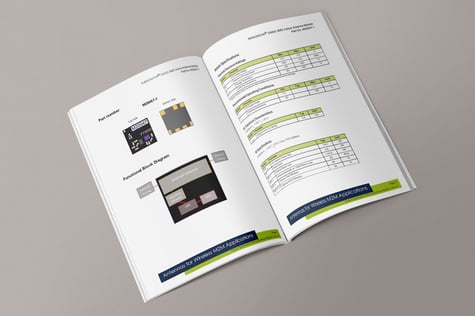Ground planes are an essential part of antenna design. They function like a runway for transmissions to and from the antenna, reflecting signals into and away from the antenna to minimise interference.
For fixed antennas, the earth’s surface itself functions as the ground plane, reflecting radio waves into and away from the antenna. For portable antennas, the ground plane has to be part of the printed circuit board itself. This can become a real issue when designing small GNSS tracking devices: space confines and close proximity to other components can compromise the efficiency of a ground plane. In this article we’ll look at the details of the conundrum, and offer some solutions.
Space is precious
Ground planes have to take up space in a device: in a tiny GNSS tracking device, the need to devote precious space to a ground plane can be problematic if it is not taken into account early on in the design process. Trying to accomodate the space of a ground plane in the final stages of design can fundamentally compromise the aesthetics and portability of a device - as well as its operation.
In order to be effective, a ground plane needs to have a radius of at least a quarter of the wavelength of the radio waves the antenna is transmitting. For GNSS and GPS, which broadcast at either 1575.42 MHz or 1227.60 MHz, this means a ground plane with a radius of around 5 cm.
Finding the space for a modular antenna and its ground plane can be tricky in the confines of a small tracking device. Antenova’s range of embedded antennas provide multiple potential solutions for the space needs of your device: surface-mounted, ceramic patch, and FPC antennas (such as flexiiANT). These all have advantages and disadvantages that will enable them to work differently in different scenarios, including allowing for ground plane constraints. Antenova’s Intelligent Antenna Selector will help you choose the right antenna for your device’s needs, and ensure you have optimum solution to match the available ground plane length.
Working in synergy with components
Ground planes need predictable conductivity and radiation if they are to effectively reflect waves for the antenna. In a tiny device, the close proximity of components on a circuit board can cause exactly the kind of electromagnetic interference a ground plane is intended to remove.
It is crucial that the layout of your device’s circuit board does not affect the ground plane. Even if you have chosen an appropriate antenna, the layout of components on a circuit board can prevent it from transmitting and receiving properly. This is a particular issue in GNSS tracking devices, where space is at a premium and components need to be close to one another. Antenova can analyse and optimise your device’s PCB to ensure that your GNSS tracking device will have a fully functioning ground plane in harmony with all components.
Ground planes are the beginning
Ground planes play a major role in ensuring effective signal transmission. They ensure that the optimum signals arrive and depart from your antenna, thereby minimising interference. However, they do not necessarily cut off all irrelevant signals: for example, glass and buildings in the surrounding area can reflect irrelevant signals to an antenna, potentially compromising functionality.
Portable tracking devices are particularly vulnerable to this. Engineers need to allow for the inevitable fact that their devices are likely to be carried into all sorts of environments, including potentially hostile ones, but they still need to be capable of transmitting and receiving reliably. Ground planes can do a lot for ensuring your tiny tracking device is fit for purpose, but the antenna itself can provide an extra degree of isolation from potential interference.
Tiny tracking devices are characterised by the confines put on them by limited space and the environments they find themselves operating in. Being aware of these early on in the design process is essential. However small your device will be, it will need to have a ground plane if it is to send and receive signals.
Look into the antennas that work best for your particular design early on, and consult experts to ensure that the layout of your device’s circuit board will not compromise its ground plane. The extensive range of antennas now available, from all-in-one modules to flexible, means that you will most likely be able to incorporate an adequate ground plane into most tiny tracking devices, if you start thinking about it from early on in your design process.




